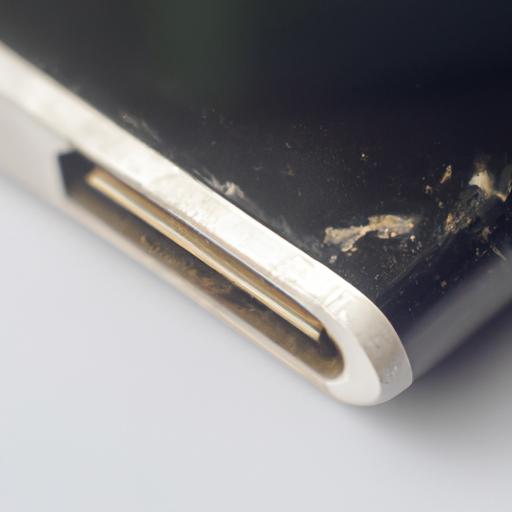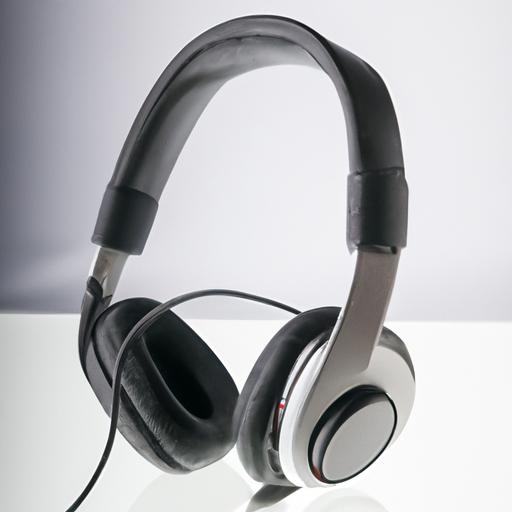How to Clean USB-C Port on Phone: The Ultimate Guide
Have you ever experienced frustration when your phone’s USB-C port stops working properly? It’s a common problem that many smartphone users face. The culprit? A dirty USB-C port. In this comprehensive guide, I’ll show you how to clean your USB-C port effectively, ensuring seamless connectivity and optimal performance for your phone.
Maintaining a clean USB-C port is vital for several reasons. Firstly, a clean port ensures a secure connection between your phone and various devices, such as chargers, headphones, or external storage. A dirty port can obstruct the cable’s insertion, leading to connectivity issues and unreliable charging. Secondly, a clean USB-C port prevents dust, debris, and pocket lint from accumulating, which can damage the delicate pins inside the port. By regularly cleaning your port, you can prevent potential hardware failures and extend the lifespan of your device.
Cleaning your USB-C port comes with a range of benefits. Firstly, you’ll experience a consistent and reliable charging experience. No more wiggling the cable or struggling to find the right angle for a connection. Secondly, a clean port ensures fast data transfer speeds, allowing you to sync files and backup your device quickly. Lastly, by maintaining a clean port, you can avoid costly repairs or replacements down the line, saving you both time and money.
Now that we understand the importance and benefits of a clean USB-C port, let’s dive into the step-by-step process of cleaning it effectively. But before we begin, always remember to disconnect your phone from any power source and turn it off to avoid any potential accidents.
Stay tuned for Section II, where we will explore the fundamentals of USB-C ports and common issues associated with dirty ports.
Understanding USB-C Ports
A. What is a USB-C port?
Before we delve into cleaning techniques, let’s familiarize ourselves with what a USB-C port actually is. USB-C, also known as Type-C, is a versatile and standardized port that has revolutionized the way we connect and charge our devices. It is a small, oval-shaped port that can be found on many modern smartphones, tablets, laptops, and other electronic devices.
The USB-C port offers numerous advantages over its predecessors. It supports faster data transfer speeds, allowing you to transfer large files in a matter of seconds. It also supports higher power delivery, enabling fast charging for your devices. Additionally, USB-C ports are reversible, which means you no longer have to worry about plugging the cable in the wrong way.
B. Common issues with dirty USB-C ports
Despite the benefits of USB-C ports, they are prone to accumulating dirt, dust, and lint over time. These tiny particles can find their way into the port, obstructing the connection between the cable and the pins inside. This can lead to various issues, such as intermittent charging, slow data transfer speeds, or even a complete failure to establish a connection.
C. Impact of a dirty USB-C port on phone functionality
A dirty USB-C port can significantly impact the functionality of your phone. When the port is obstructed, it may not be able to establish a stable connection with charging cables or other devices. This can result in frustrating charging problems, such as slow charging, inconsistent charging, or a complete inability to charge your device. Moreover, a dirty port can affect the data transfer speeds, hindering your ability to sync files or perform backups efficiently.
In addition to charging and data transfer issues, a dirty USB-C port can also lead to wear and tear on the pins inside. When debris accumulates, it can cause the pins to bend or break, resulting in permanent damage to the port. This can lead to more severe problems, such as the need for costly repairs or even a complete replacement of the port.
Stay tuned for Section III, where we will explore how to assess the cleanliness of your USB-C port and the safety precautions to take before cleaning.
Assessing the USB-C Port
A. Identifying Signs of Dirt or Debris in the Port
Before diving into the cleaning process, it’s essential to assess the condition of your USB-C port. Here are a few signs that indicate the presence of dirt or debris:
-
Difficulty Inserting Cable: If you’re struggling to plug in your charging cable or experiencing resistance when inserting it into the port, it’s likely that there is dirt or debris obstructing the connection.
-
Intermittent Charging: Does your phone charge sporadically or disconnect frequently during charging? This inconsistency could be a result of dirt or debris interfering with the pins inside the port.
-
Visible Debris: Take a close look inside the USB-C port using a flashlight. If you notice any visible dirt, dust, or lint, it’s time for a thorough cleaning.
B. Safety Precautions before Cleaning
Before you begin cleaning your USB-C port, it’s crucial to take a few safety precautions to prevent any accidental damage to your phone:
-
Power Off: Ensure that your phone is turned off before cleaning the USB-C port. This step eliminates the risk of electrical shock and protects both you and your device.
-
Disconnect from Power Sources: Unplug your phone from any charging cables or accessories to avoid any potential electrical hazards during the cleaning process.
-
Use Non-Conductive Tools: When cleaning, always use non-conductive tools such as a soft brush or toothpick. Metal objects can cause damage to the delicate pins inside the port.
By following these safety measures, you can proceed with confidence to clean your USB-C port effectively. In the next section, we will explore various methods to clean your USB-C port, ensuring a reliable and smooth connection.
Methods to Clean a USB-C Port on a Phone
A. Using Compressed Air to Remove Dust and Debris
One effective method to clean your USB-C port is by using compressed air. This method is particularly useful for removing loose dust particles and debris that may have accumulated inside the port. Start by obtaining a can of compressed air, which can be easily found at electronic stores or online.
To clean the USB-C port, hold your phone in a stable position and gently insert the nozzle of the compressed air can into the port. Be sure to maintain a distance of a few centimeters to avoid causing any damage. Then, press the nozzle to release short bursts of air into the port. This will dislodge any loose dust or debris, effectively cleaning the port.
B. Cleaning with a Soft Brush or Toothpick
If you notice stubborn dirt or lint in your USB-C port, using a soft brush or toothpick can be a handy solution. Ensure that the brush or toothpick you use is clean and free from any moisture or residue. Gently insert the bristles of the brush or the edge of the toothpick into the port and carefully scrape away any visible dirt or debris.
However, it is crucial to exercise caution during this process to avoid damaging the delicate pins inside the port. Use minimal force and be gentle with your movements. Take your time and carefully remove any dirt, ensuring not to push it further into the port.
C. Utilizing Isopropyl Alcohol and a Cotton Swab for Deeper Cleaning
For a thorough and deeper clean, utilizing isopropyl alcohol and a cotton swab can be highly effective. Isopropyl alcohol, also known as rubbing alcohol, is readily available at pharmacies or supermarkets. Start by dampening a cotton swab with a small amount of isopropyl alcohol. Make sure the swab is not dripping wet, as excessive moisture can damage your phone.
Next, insert the moistened cotton swab into the USB-C port and gently rotate it, ensuring that it comes into contact with all areas of the port. The alcohol will help dissolve any stubborn dirt or grime, sanitizing the port in the process. Once you have thoroughly cleaned the port, allow it to dry completely before reconnecting any cables or turning on your phone.
Stay tuned for Section V, where we will explore essential tips to prevent dirt accumulation in USB-C ports, ensuring your port remains clean for longer periods.
Section V: Tips to Prevent Dirt Accumulation in USB-C Ports
A. Keeping the USB-C Port Covered When Not in Use
One effective way to prevent dirt accumulation in your USB-C port is by keeping it covered when you’re not using it. Dust, lint, and other debris have a knack for finding their way into unprotected ports. Utilize a port cover or dust plug specifically designed for your phone’s USB-C port. These inexpensive accessories act as a shield, blocking unwanted particles from entering the port. By implementing this simple preventive measure, you can significantly reduce the chances of dirt buildup and potential connectivity issues.
B. Regularly Cleaning the Phone’s Exterior to Prevent Debris Transfer
Did you know that the external surfaces of your phone can directly impact the cleanliness of your USB-C port? Dust and dirt can accumulate on the phone’s exterior, and when you insert the charging cable, these particles can easily transfer into the port. To prevent this, make it a habit to regularly clean your phone’s surface using a soft, lint-free cloth or a microfiber cloth. Wipe away any dust, fingerprints, or smudges that may have accumulated. By maintaining a clean phone exterior, you reduce the risk of debris finding its way into the USB-C port.
C. Avoiding Exposure to Moisture and Liquids
Moisture and liquids are the arch-nemeses of electronic devices, and your USB-C port is no exception. To prevent dirt and debris from sticking to the port, it’s crucial to avoid exposing it to moisture and liquids. Keep your phone away from wet surfaces, humid environments, and be cautious while using it near water sources. Additionally, take care to prevent any liquid spills that could potentially seep into the port. By keeping your USB-C port dry and free from moisture, you minimize the likelihood of dirt buildup and potential damage.
Stay tuned for Section VI, where we’ll conclude our guide with a recap of the cleaning methods and prevention tips, emphasizing the importance of maintaining a clean USB-C port for optimal phone performance.
Conclusion
In conclusion, keeping your USB-C port clean is essential for maintaining optimal performance and functionality of your phone. By following the methods outlined in this guide, you can ensure a reliable connection, fast data transfer speeds, and prevent potential hardware issues.
Regularly assessing and cleaning your USB-C port using compressed air, a soft brush or toothpick, and isopropyl alcohol and a cotton swab will help remove dust, debris, and lint that may accumulate over time. By implementing these cleaning methods, you can ensure a secure and efficient connection between your phone and external devices.
Additionally, incorporating preventative measures such as keeping the USB-C port covered when not in use, regularly cleaning your phone’s exterior, and avoiding exposure to moisture and liquids will further safeguard the port from debris accumulation.
Remember, a clean USB-C port is not only beneficial for your phone’s performance but also for your overall user experience. Say goodbye to frustrating charging issues, unreliable data transfer, and potential damage to your device.
So, why wait? Take a few minutes to clean your USB-C port today and enjoy the convenience and efficiency it brings to your daily smartphone usage. Your phone will thank you!
Thank you for taking the time to read this guide on how to clean your USB-C port on your phone. I hope you found it informative and helpful. If you have any further questions or tips to share, feel free to leave a comment below. Happy cleaning!






